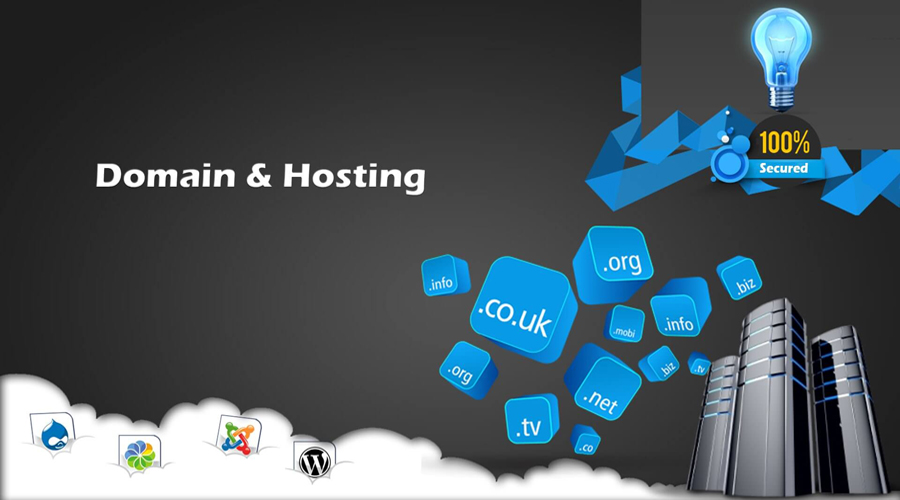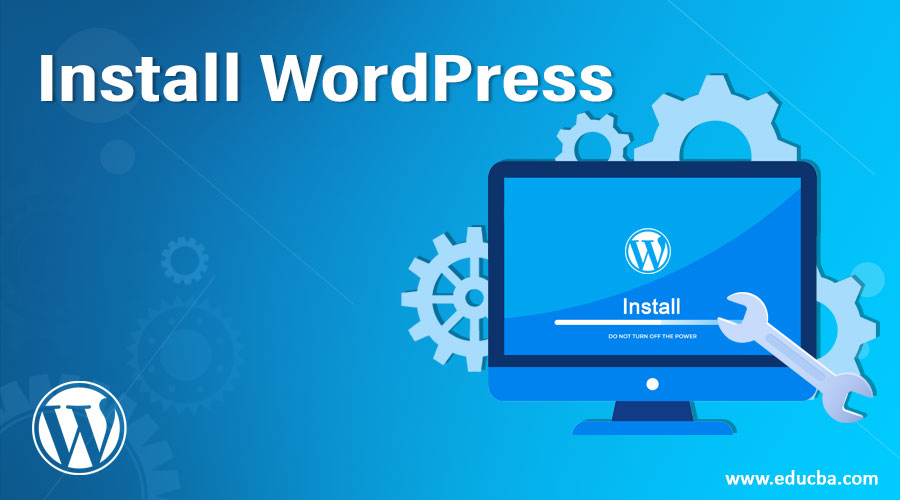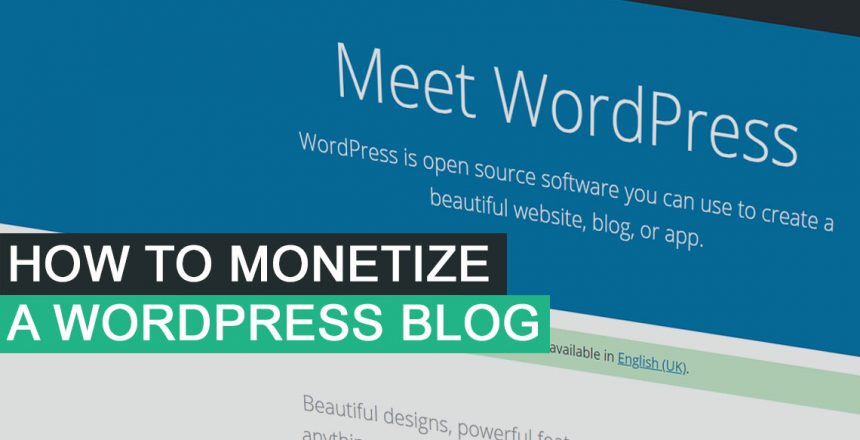How to monetize a WordPress blog, Monetizing a WordPress blog is due to the fact that you can make money from your blog, turning your hobby into a source of income. Use the earnings to improve your blog’s content, hire help, or get better tools. For long-term success, monetization helps cover costs and keeps your blog running. Earning money can motivate you to consistently produce great content for your readers.
Blogger monetization helps bloggers earn money from their blogs, turning their hobby into income. Monetization covers costs, ensuring the blog can continue producing content. It introduces bloggers to business skills and, when successful, establishes them as experts in their field.
Choosing the Right Niche

Choosing the right niche for your blog is crucial for several reasons. Firstly, it’s important to select a niche that aligns with your interests and passions. This ensures that you stay motivated and enjoy creating content for your blog. Secondly, consider the market demand for your chosen niche.
Look for topics that have an audience interested in the type of content that how to monetize a WordPress blog? Leverage your expertise in a specific area to provide valuable insights. Your knowledge and experience will allow you to provide valuable and unique content to your audience.
Lastly, assess the monetization potential within your chosen niche. Look for opportunities to generate income, whether through advertising, affiliate marketing, or selling products. A niche with strong monetization potential can contribute to the long-term sustainability and success of your blog.
Setting Up a WordPress Blog
Setting up a WordPress blog involves a series of steps to establish a strong foundation for your online presence.
Choosing a Domain and Hosting

How to monetize a WordPress blog? Start by selecting a unique and memorable domain name for your blog. This is your web address. Next, choose a reliable hosting provider to store your blog’s files and make them accessible online.
Installing WordPress

Many hosting providers offer a quick and easy WordPress installation process. Follow the provided instructions to install WordPress on your chosen domain. This step lays the groundwork for building and customizing your blog.
Choosing a Theme and Customizing Design

Explore the variety of WordPress themes available, and choose one that suits the look and feel you want for your blog. Themes control the overall design. Customize the theme to reflect your style, including colors, fonts, and layout.
Creating Essential Pages
Set up essential pages such as ‘Home,’ ‘About Us,’ and ‘Contact.’ These pages provide visitors with information about your blog and yourself and a way to get in touch.
Configuring Permalinks and SEO Settings
How to monetize a WordPress blog? Optimize your blog’s URLs by configuring permalinks. Set them to be descriptive and include keywords. Additionally, configure basic SEO settings using plugins or the built-in features in WordPress to enhance your blog’s visibility in search engines.
Setting Up Categories and Tags
How to monetize a WordPress blog? Organize your content by creating categories and tags. This helps both you and your readers navigate and find specific topics easily.
Installing Essential Plugins
Enhance your blog’s functionality by installing essential plugins. Examples include those for SEO optimization, security, and social media integration. WordPress has a vast plugin library catering to various needs.
Implementing Security Measures
Strengthen the security of your WordPress blog by regularly updating themes, plugins, and the WordPress core. Additionally, consider installing a security plugin and using strong, unique passwords.
Creating a Backup System
Implement a regular backup system to protect your content in case of unexpected issues. There are plugins available that automate this process, ensuring you can restore your blog if needed.
Testing Responsiveness
Ensure your blog is responsive by testing it on different devices like smartphones and tablets. A responsive design ensures a positive user experience across various platforms.
Creating Quality Content
How to monetize a WordPress blog? Understand who your readers are, their interests, and problems. This helps you tailor your content to meet their needs. Develop a strategy outlining what topics you’ll cover, how often you’ll post, and the style of your writing. This provides a roadmap for consistent and purposeful content creation.
How to monetize a WordPress blog? Write clearly and engagingly, breaking down complex ideas. Use visuals like images and videos to make your content more appealing and effective. Include relevant keywords, create descriptive titles, and format your content for SEO. This helps your blog get discovered by a wider audience.
Prompt discussions and invite readers to engage with your content. This fosters a sense of community around your blog. Stick to a consistent publishing schedule to retain and grow your audience. Whether it’s daily, weekly, or bi-weekly, reliability is appreciated by your readers.
Building and Growing Your Audience
How to monetize a WordPress blog? Share your blog posts on Facebook, Twitter, and Instagram. Engage with your audience on these platforms to boost your blog’s visibility. Use email marketing to connect directly with your audience.
Encourage subscriptions and send regular updates to keep them engaged. Respond to comments on your blog and build a sense of community. Happy readers are more likely to share your content and become loyal followers.
Partner with other bloggers or influencers. Guest posting and collaborations introduce your blog to new audiences. Organize contests requiring participants to share your blog. This creates excitement and attracts new followers.
Use SEO practices to make your blog more discoverable. This includes using relevant keywords and creating quality content. Share snippets of your blog on social media, directing followers to your website. Cross-promotion across different channels expands your reach.
Different Monetization Methods
Display Ads and Ad Networks
Display ads are visual advertisements shown on your blog. Ad networks, like Google AdSense, connect you with advertisers willing to pay for space on your site. Sign up for an ad network such as Google AdSense. Once approved, you can choose the types of ads to display on your blog.
You earn money based on user interactions – either clicks on the ads or impressions (the number of times the ad is viewed). Place ads strategically where they’re visible but not intrusive. Consider the size and format of the ads for better engagement. Be mindful not to overload your site with ads, as it may affect user experience. Balance is key to maintaining a positive reader experience while earning revenue.
Affiliate Marketing
How to monetize a WordPress blog? Affiliate marketing involves promoting products or services and earning a commission for every sale or click made through your unique affiliate link. Join affiliate programs relevant to your blog’s niche. Popular platforms like Amazon Associates, , or Click Bank offer a wide range of affiliate products.
Integrate affiliate links naturally into your content, recommending products you genuinely endorse. This can be done through blog posts, reviews, or product mentions. You earn a commission when your audience clicks on the affiliate link and makes a purchase or takes a specific action, depending on the affiliate program terms. Disclose your use of affiliate links to maintain transparency with your audience. Honesty builds trust and credibility.
Sponsored Content and Partnerships
Sponsored content involves collaborating with brands to feature their products or services in your blog posts. Brands pay you for the exposure and promotion. Reach out to brands directly or join influencer marketing platforms where brands and bloggers can connect for collaboration opportunities. When partnering with a brand, create content that seamlessly integrates their product or service into your blog.
This could include dedicated articles, reviews, or mentions within your regular content.
Brands may offer payment, free products, or a combination of both as compensation for featuring their content on your blog. While collaborating with brands, ensure that the sponsored content aligns with your blog’s tone and provides value to your audience. Authenticity is crucial for maintaining trust.
Selling Digital Products or Services
How to monetize a WordPress blog? The monetization method involves creating and selling digital products or services directly from your blog. Examples include e-books, online courses, templates, or any other digital items relevant to your audience. Determine what digital products or services you can provide based on your expertise and your audience’s needs. Consider creating content that solves specific problems or adds value. Use e-commerce platforms or plugins to set up an online store on your blog.
Ensure a user-friendly interface for visitors to browse and purchase your digital products easily.
Promote your digital products through blog posts, email newsletters, and social media. Highlight the benefits and unique features to entice your audience. Implement a smooth delivery system for digital products, ensuring customers can easily access and download their purchases.
Membership and Subscription Models
Membership and Subscription Models strategy involves offering premium content or services to your audience in exchange for a subscription fee. Readers become members, gaining access to exclusive content or benefits. Decide on the type of content or perks you’ll offer at different membership levels. This could include exclusive articles, community forums, or early access to new content.
Create a secure members-only section on your blog accessible only to subscribers. This is where you’ll deliver exclusive content and engage with your members. Utilize subscription management platforms or plugins to handle payments, access control, and communication with your members. Promote your membership model through blog posts, social media, and email marketing. Communicate the benefits of becoming a member to entice your audience.
Optimizing for Search Engines
SEO Basics for WordPress
SEO (Search Engine Optimization) involves optimizing your content to rank higher in search engine results, making it more visible to users. Install SEO plugins like Yoast SEO or All in One SEO Pack. These tools simplify on-page SEO tasks and guide you in optimizing content.
Keyword Research and Implementation
How to monetize a WordPress blog? Identify relevant keywords related to your blog’s content using tools like Google Keyword Planner or Uber suggest. Strategic Placement: Integrate these keywords naturally into your content, including titles, headings, and throughout the body. This helps search engines understand the relevance of your content.
Creating Quality Content
Develop high-quality, relevant content that addresses your audience’s needs. Search engines prioritize content that provides value to users. Craft compelling and keyword-rich headlines. Headlines play a crucial role in search engine rankings.
Optimizing Images and Multimedia
Add descriptive alt text to your images, incorporating relevant keywords. This helps search engines understand the content of your images. Compress image files to improve page loading speed. Fast-loading pages contribute positively to SEO.
Internal and External Linking
Include internal links to other relevant pages on your blog. This helps search engines navigate your site and understand its structure.
Reference reputable external sources in your content. Outbound links to authoritative sites can boost your blog’s credibility.
Mobile Optimization
Ensure your WordPress theme is responsive, providing a seamless user experience across devices. Mobile-friendly sites receive preferential treatment in search results.
Page Load Speed
Use caching plugins and optimize images to enhance page loading speed. Google considers page speed when ranking websites.
XML Sitemap Submission
Create an XML sitemap of your site’s structure. WordPress plugins can automate this process. Submit your XML sitemap to search engines like Google and Bing through their webmaster tools. This helps search engines index your site more efficiently.
Regular Content Updates
Regularly update your blog with new, relevant content. Search engines favor sites that consistently provide up-to-date information.
Monitoring Analytics
Use tools like Google Analytics to monitor your blog’s performance. Analyze user behavior, popular content, and keyword effectiveness to make informed SEO adjustments.
Conclusion
Making money with your WordPress blog is not just about cash flow; it’s about smart and creative strategies. By using methods like ads, affiliate marketing, sponsored content, selling digital goods, and memberships, you can create multiple income streams that fit your content and audience. Balancing income goals with maintaining authenticity is key – choose methods that resonate with your niche and enhance your audience’s experience.
Consistency is crucial, so regularly assess performance, gather feedback, and stay updated on industry trends. Whether you’re a hobbyist or a pro, blog monetization is a dynamic journey that evolves with your content and audience. It’s not just about profits; it’s about turning your passion into a sustainable venture, benefiting both you and your readers in the ever-changing online content landscape.



